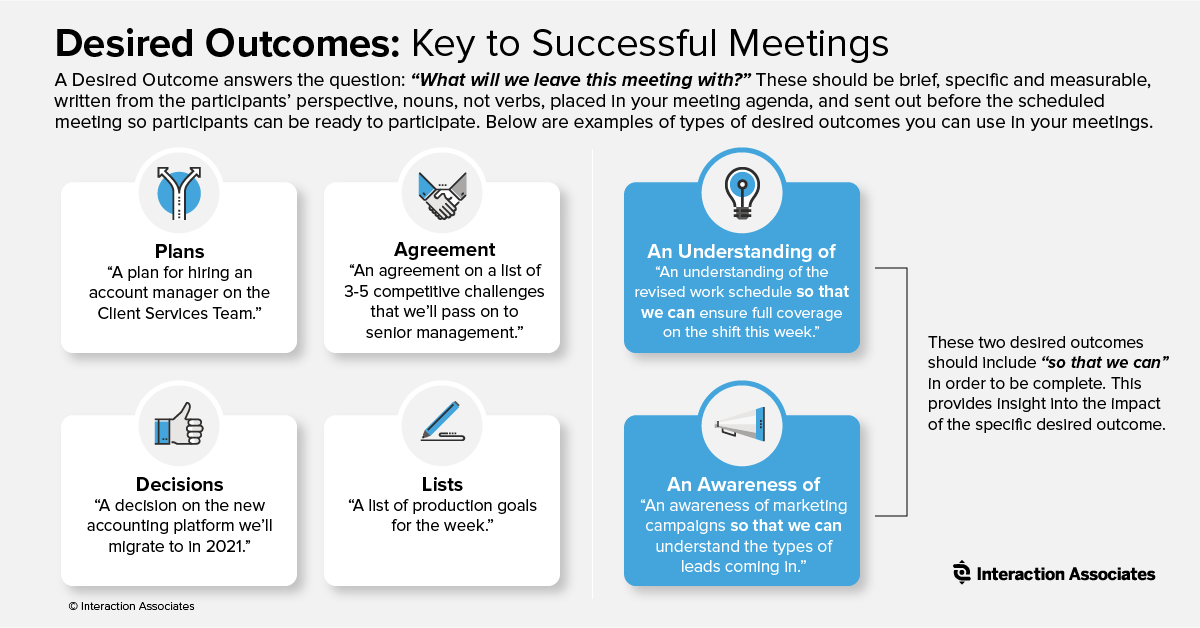IA Insights > Blog
Six Insights from Working Together Across Distances & Differences
Six Insights from Working Together Across Distances & Differences
Interaction Associates and Vantage Partners hosted The New Norm: Working Together Across Distances & Differences on February 4. This event featured several practical tips and insights. In this blog, I explore a key insight from each session that I plan to put into practice immediately.
Navigating & Influencing Your Network
When looking for support for an idea or proposal, or needing a decision to be made in your favor, knowing the key stakeholders and the degree to which they may or may not support you is critical. Sometimes, we're fortunate and everyone is aligned. Other times, it requires not only knowing who the stakeholders are, but also understanding the nature of the relationships between them. In this session, Vantage Partners Engagement Leader, Stephen Monk, teaches us how to map out a network of stakeholders so as to effectively and efficiently use our time and gain buy-in.
What I Learned: Utilize Stakeholder Mapping.
When multiple stakeholders are involved in the decision-making process, it's important to take time and map out who the decision makers are and where I think they stand on the decision to be made. I also have to consider the relationship I have with each stakeholder, as well as the nature of the relationships they have with each other. This tool and approach will help guide me in appropriately influencing my network of stakeholders.
Taming the Online Meeting Monster
In 2020, we realized online meetings are here to stay, even after we return to some state of normalcy. I hear from friends, who are experiencing regular online meetings for the first time, that they are painful, unnecessary, and exhausting. In this session, IA’s Chris Williams and Susan DeGenring gave tips on taming the monster and improving meeting cultures.
What I learned: Practice Desired Outcomes.
While there were many tips given, Desired Outcomes stood out the most to me and others that attended this session. Desired Outcomes can improve the effectiveness of online or in-person meetings. They answer the question "What will we leave this meeting with?" They should be included in your meeting agenda and sent along with a calendar invite so attendees are aware of topics beforehand. Review the graphic below for examples of Desired Outcomes and how to utilize them.
 Learn more about IA's Action Accelerator Tame the Online Meeting Monster.
Learn more about IA's Action Accelerator Tame the Online Meeting Monster.
Getting Past "No"
When asking for support or perhaps seeking agreement – and experiencing resistance from your counterpart, we tend to respond in a way that meets neither your interests or the other person’s. We often default to telling the other person the reasons they should say “yes,” telling them that their concerns are nothing to worry about or attempting to prove to them that they are wrong for saying “no.” In this session, Carol Bonett, a Partner at Vantage Partners, provided a strategy for getting past "no" and working collaboratively to find a solution.
What I learned: Work Together.
When making a request that is met with resistance, I need to take a step back and better understand the other person’s interests – what they care about and what’s important to them. If they say “no,” I should first understand their resistance by uncovering their interests and then looking for a way to help both of us. I can also bring them into the problem-solving process so we can come up with a solution that is acceptable to both parties.
Build Trust and Rapport in the Virtual Workplace
Over the past year, many people have realized the vast benefits of working remotely. They've also realized some of the pitfalls like relationship building from a distance and the challenges it brings. In this session, IA's Barry Rosen and Eve Keller provided essential ingredients for staying connected and building trust in a virtual work environment.
What I learned: It starts with me.
In building trust and rapport, it starts with me. I have to be transparent, dependable, communicate my values, and demonstrate my expertise and judgement. I also need to be considerate, especially in these difficult times when people are balancing family and work life like never before. It's crucial that leaders practice this and inform their employees of these expectations in order to have a successful distributed workforce.
Learn more about IA's Action Accelerator Building Trust and Rapport in the Virtual Workplace
Talking to the Other Side
In the wake of the 2020 U.S. Elections and Capitol Hill riot, we are feeling alarmed and upset. We as a nation see ourselves more divided than ever. How can we work together if we see individuals as "The Other Side" and feel that we don't even share basic core values? In this session, a panel of experts explored how we can bring out the best in ourselves and each other.
What I learned: When I'm triggered, pause.
This session provided eight guidelines for talking to the other side. While all were important, the guideline which stood out most for me was, "When you get triggered, pause." With what’s happened in the past year, I sometimes find myself discouraged, stressed, or over-emotional. In work or my personal life, I can quickly react to something I disagree with rather than taking a moment to pause and choose how I react. I will now take this moment to understand how my reaction will impact my relationship with someone before I respond.
Ask Better Questions to Get Better Solutions
"How do we get people to do their jobs?" "Where will we find the time to finish this project?" These are common types of questions we ask when challenges arise at work, but are they the right questions? These questions are often traps that prevent us from seeing the big picture and ultimately lead to poor decision making. In this session, Lisa Weaver and Jay Cone of Unstuck Minds, explained the importance of asking better questions and how we can reframe them to get better solutions.
What I learned: Re-think my questions.
During stressful times, I'm guilty of asking quicksand questions like, "how will I finish these projects?” But this session helped me realize what’s wrong with these questions. Better questions would be "How can I improve the project intake to better handle this influx?" or “What conversations can I start having with my clients to ensure they’re getting my best work?” These are problem-solving questions that I need to explore, rather than feeling lost in a sea of work.
Learn more from Unstuck Minds about asking better questions to get to better solutions
I look forward to seeing how these insights improve my work and overall well-being. I encourage you to enroll one of these practices in your own work and share with us the impact it made.





